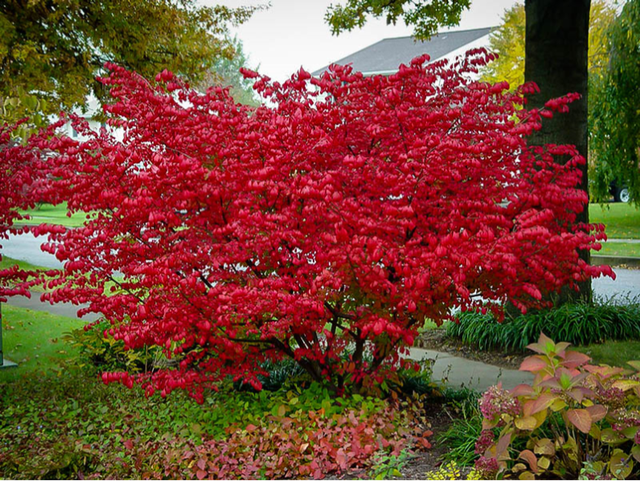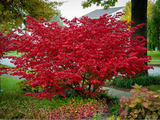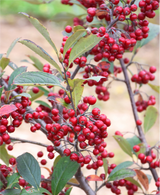- 2024 Native Trees
- >
- Shrubs
- >
- Red Chokeberry (Aronia arbutifolia)
Red Chokeberry (Aronia arbutifolia)
Height: 4 to 8 feet
Spread: 3 to 6 feet
Bloom Time: April
Bloom Description: Light Pink
Sun: Full sun to part shade
Suggested Use: Wildlife, Rain Gardens, Naturalized Areas
Tolerate: Wet Soils and Clay Soils
Native to: Jefferson County
The Red Chokeberry is best utilized in the landscape for its intense display of red berries in the fall and its great wildlife attributes. The dark green leaves turn a brilliant red in the fall and make this shrub a suitable replacement for the highly invasive burning bush (Euonymus alatus). A low maintenance shrub that provides visual interest throughout the year and plays off the colors and textures of many other plants nicely.
William Bartram marketed the Red Chokeberry in his catalog in 1792 as “Presents a good appearance, when all red with its clusters of berries” which greatly undersells this little shrub. Red Chokeberry is a multi-stemmed shrub that adapts to a variety of soils and grows in a vase-shaped form. Light pink 5 petal flowers appear in spring and give way to an abundance of glossy red fruits about ¼ inch in diameter. The berries ripen in late summer and persist through fall and well into the winter months.
In 1966, Mrs. R.W. Johnston wrote an article for the Wintersville Citizen where she wrote that red chokeberry is a great means to attract birds to the backyard. She was correct as the fruit is documented to be consumed by 40 species of birds and other wildlife. As the name applies, Red Chokeberry fruit are dry, bitter and astringent when eaten raw, but delicious. The fruit does become more palatable through cycles of freezing and thawing during winter which is why birds wait to feast on the berries until later in winter. This fact means that the berries are an important food for over-wintering songbirds when little else is available. Pollinators feed on both the nectar and pollen produced by the plant. Red chokeberry is a host plant for numerous species of Lepidoptera, including the coral hairstreak butterfly and the Catacala praeclara underwing moth.■






